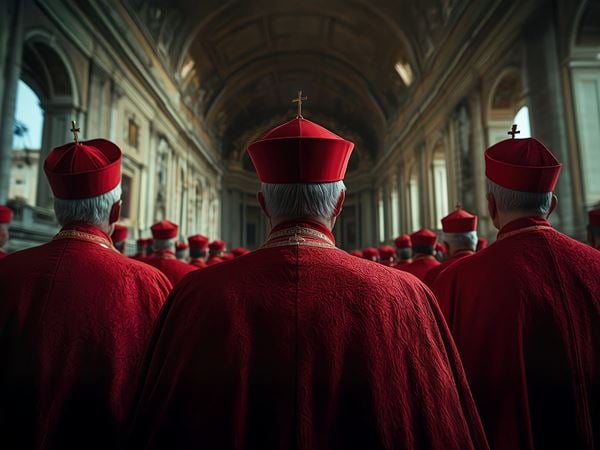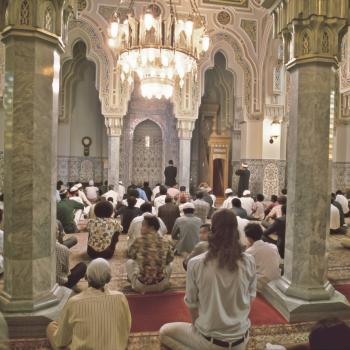
Bad Popes
It has been said that the office of Pope began its rise in prominence and power with Pope Leo I (circa AD 400-461) but reached its zenith during the 12th through 13th centuries. The High Middle Ages were a time of towering churches, ornate cathedrals, and newfound monasteries.
New religious orders (such as the Franciscans and Dominicans) began during that period, and new theological ideas were on the rise because of the brilliance of thinkers like St. Thomas Aquinas. During this period, the popes enjoyed unprecedented spiritual and temporal powers, and through excommunication and interdict, they could control kings, kingdoms, and Christians alike.
However, the papacy has not always enjoyed the power or the prestige of the High Middle Ages. Indeed, books like E. R. Chamberlin’s The Bad Popes highlight the fact that those chosen to occupy the Chair of St. Peter were not all “saintly” men.
The various means of selecting Peter’s successor, including the papal conclave, have not always netted the outcome hoped for.
As the lives of the following popes suggest, luck has not always been on the side of the Church when replacing the leader of the largest Christian denomination in the world.
Here's a list of some notorius popes throughout history:
Bought the Papacy, Betrayed a Council, and Starved a Predecessor
Pope Vigilius (AD 537-555): He purchased the office of pope by making promises to those who would elect him—promises he said he would keep if elected. Vigilius accepted a large bribe from Empress Theodora, promising to disavow the Council of Chalcedon (AD 451) if made pope. It is claimed that Vigilius had his predecessor to the office (Pope Silverius) starved to death in order to capture Peter’s Throne.
Profited from Famine While His People Starved
Pope Sabinian or Sabinianus (AD 604-606): During his pontificate, there was a massive famine. In order to line his personal pockets with wealth, it is claimed that he sold grain to the starving people but did so at exorbitant prices. He became rich, but they suffered and starved to death.
Put a Corpse on Trial—Then Paid with His Life
Pope Stephen VI/VII (AD 896-897): His most famous act was to convene the so called “Cadaver Synod” in which he had the body of his predecessor (Pope Formosus) exhumed, dressed in papal roes, and tried for supposedly violating Canon Law. After finding the deceased pope “guilty,” Stephen had Formosus’ body stripped and tossed into the Tiber River. Consequently, civil unrest broke out, and Pope Stephen was deposed, imprisoned, and ultimately strangled to death.
The Pope of Murder, Mistress, and the “Pornocracy”
Pope Sergius III (AD 904-911): During his pontificate, it is claimed that he had a mistress; the emperor’s 15-year-old daughter. She was almost 30 years younger than her papal lover. Sergius fathered a son by the young girl—a boy, who would become Pope John XI. Papal historians have called his pontificate the “pornacracy of the papacy.” He is also said to have arranged the murders of two other popes—Pope Leo V and Leo’s rival, the antipope Christopher.Toasted the Devil and Died in Sin
Pope John XII (AD 955-963): This pope was said to be a gambler and heavy drinker. During his gambling, he apparently called upon pagan gods to aid him, and he once publicly toasted the devil while inebriated. It is said that he turned the papal residence into a brothel, had an affair with his father’s mistress and one with his niece as well. He supposedly died in bed while committing adultery with a married woman.Bribed His Way In, Fathered His Successor
Pope John XIX (AD 1024-1032): John was made pope, though he had never been ordained to the priesthood. He too bribed people to secure his election. According to tradition, his “nephew” succeeded him as pope, though historians believe that this “nephew” was actually one of Pope John’s illegitimate sons.
Sold the Papacy—Three Times Over
Pope Benedict IX (circa AD 1032-1048): This man occupied Peter’s chair some three times (i.e., October 21, 1032 through September 1044, March 10 to May 1, 1045, and November 8, 1047 to July 16, 1048). The second time Benedict IX became pope, he sold the office to Pope Gregory VI because Gregory was willing to pay a hefty price for the position. His life has been described as corrupt, filled with scandal, sensuality, and violence. He put his own interests ahead of the Church and its people.Bribery, Simony, and a Palace Full of Illegitimate Children
Pope Innocent VIII (AD 1484-1492): Innocent was anything but. He is said to have bribed certain cardinals in order to get himself elected pope. He also had many illegitimate children, and they lived with him in the papal palace while he was pope. He sold ecclesiastical offices to make money—a practice known as “simony.” He even appointed his 13-year-old grandson as a cardinal. He also sold a valuable papal tiara for the sake of personal again. Historians claim that he ordered the hunting down and killing of those suspected of practicing witchcraft.Gold, Mistresses, and the Most Notorious Pope in History
Pope Alexander VI (AD 1492-1503): Almost universally considered the “most notorious” and the “worst” of the “bad popes,” Alexander VI bought his pontificate from a corrupt conclave, successfully bribing 17 of the 22 cardinals who then voted for him. He lived an openly promiscuous life, having numerous mistresses and illegitimate children—before and after his election as pope. He is said to have had “boundless greed,” remarkable “ruthlessness,” and a constant focus on getting gold and women. One historian described his time as pope as one that “was subject to wild slander, orgies, poisonings, and even incest.” Alexander VI “epitomized the worst excesses of the period and the need for genuine reform in the papacy.”"Hitler's Pope"
Pope Pius XII (AD 1939-1958): Sometimes referred to as “Hitler’s Pope,” Pius XII has been criticized for not publicly condemning the Nazis during WWII. While his intent was to protect Roman Catholics from the Third Riech, his critics point out that he did not stand up against the evils of the Holocaust even though he knew they were taking place.
Summary
Because of men like these aforementioned “leaders,” many papal historians say that beginning in the 14th century, the papacy began to decline, losing power, prestige, and its potential positive influence in the world and even within the Church. And yet, these “bad popes” are not the Church, and the Church is not solely its popes. Leaders, such as these, have impact—and, in some cases, negative impact on the Church, its members, and the word.
Nonetheless, if we get obsessed about the flaws of past leaders, and reject the Church over it, we should examine the New Testament and remember that Jesus’ chosen apostle (he who is considered by Catholics to be the first “Pope”) Peter denied Jesus, and Judas (another apostle) betrayed him.
Paul, a later apostle, had assented to the persecution and death of Christians. Do we dismiss Christianity and Jesus over such men who were “less than” the Savior the represented and the Church they led? Of course not. Perhaps men like these “bad popes” are an invitation to take our own moral inventory and let the person “without sin cast the first stone” (John 8:7).
Throughout the history of the world, God has always had only one source through which to reveal His will and ways: human beings—all of which are flawed, and so many of which are corrupted by power or prestige.
As Lord John Dalberg-Action famously said: “Power tends to corrupt and absolute power corrupts absolutely. Great men are almost always bad men, even when they exercise influence and not authority; still more when you super-add the tendency of…corruption by authority.”
Truly, the history of the world is filled with corrupt men. However, when you give them absolute power (as certain popes have enjoyed), the potential for corruption jumps exponentially—as the lives of the ten popes mentioned above prove.
While the days of “bad popes” (in the way the aforementioned were “bad”) are over, there are those within the Catholic Church today who still think some popes are bad. And the reverence and awe that popes once provoked among the faithful is largely a thing of the past.
Popes who are theological conservative are hated by liberal Catholics, and when one of Peter’s successors is theologically progressive, conservatives within the Church see that leader as one who will likely destroy Catholicism.
Thus, while we can all agree that those listed above were probably not “good popes,” nevertheless, today a “bad pope” is largely in the eyes of the beholder.
Thankfully, however, the Church’s “checks and balances” has at least made the likelihood of having another Pope Alexander VI a veritable impossibility.
4/24/2025 6:47:48 PM



